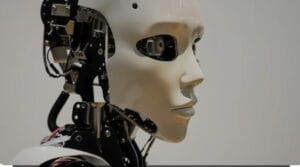Figure AI vs. Harish Singh: A Tale of Two Humanoid Robotics Approaches

The field of humanoid robotics is rapidly advancing, with companies and innovators developing machines that mimic human behavior in both form and function. Two notable contributors to this space—Figure AI and Harish Singh—approach the challenge from vastly different angles. While Figure AI is building sophisticated, industrial-grade robots powered by advanced artificial intelligence, Harish Singh focuses on accessible, educational humanoid robots made with cost-effective materials and microcontrollers. The contrast between the two reveals the diverse innovations in contemporary robotics, which range from high-tech automation to grassroots creativity.Figure AI vs. Harish Singh: A Tale of Two Humanoid Robotics Approaches
Figure AI: High-Tech Autonomy
Figure AI, which was founded in 2022, quickly established itself as a leading developer of humanoid robots that can carry out useful tasks in real-world settings. Its flagship models, Figure 01 and the more recent Figure 02, are designed for industrial settings, particularly in manufacturing, logistics, and customer service.Figure AI vs. Harish Singh: A Tale of Two Humanoid Robotics Approaches Figure AI vs. Harish Singh: A Tale of Two Humanoid Robotics ApproachesThe field of humanoid robotics is rapidly advancing, with companies and innovators developing machines that mimic human
What sets Figure AI apart is its integration of cutting-edge AI, machine learning, and robotics hardware. Figure 02, for example, features six RGB cameras, powerful vision-language models, and NVIDIA GPU computing modules. The robot is able to perceive its surroundings, comprehend spoken commands, and learn from demonstrations thanks to these systems. It can perform tasks such as making coffee, sorting items, or delivering products—all while adjusting to dynamic environments.
Physically, Figure AI’s robots are engineered with precision. Figure 02 has 16 degrees of freedom in each hand, enabling it to manipulate a wide range of objects with remarkable dexterity. It can lift up to 25 kilograms, and its modular design lets it keep getting better at both safety and performance. Accessible Robotics for Learning by Harish Singh In contrast, Harish Singh’s humanoid robots are designed not for mass deployment but for education, experimentation, and accessibility.Figure AI vs. Harish Singh: A Tale of Two Humanoid Robotics Approaches
Using components like the ESP8266 microcontroller, servo motors, and 3D-printed or lightweight materials, Singh creates functional humanoid robots that are affordable and replicable. These projects show how robotics can be made at home or in the classroom without spending a lot of money.

Basic locomotion, gesture control, and voice response systems are frequently present in his robots. While they don’t operate autonomously on the level of Figure AI’s models, they provide valuable learning experiences in programming, electronics, and mechanical design. Singh’s work has gained attention on platforms like YouTube, where he shares tutorials that encourage others to explore robotics.
Different Goals, Shared Impact
The most significant difference between the two approaches is their end goal. Figure AI’s goal is to create general-purpose humanoid robots that can work alongside or replace humans in tasks that require a lot of manual labor. This requires cutting-edge software and hardware working in perfect harmony. Harish Singh, on the other hand, is focused on inspiring innovation and making robotics more accessible to hobbyists, students, and independent creators.Figure AI vs. Harish Singh: A Tale of Two Humanoid Robotics Approaches
Both are making significant contributions to the field despite their differences. One builds for large-scale impact in industrial sectors, the other fosters curiosity and hands-on learning.
Conclusion
Figure AI and Harish Singh exemplify two ends of the robotics spectrum: enterprise innovation and grassroots ingenuity. Whether developing intelligent factory floor machines or exchanging code for classroom robots, both contribute to a common goal of making humanoid robotics a part of everyday life.